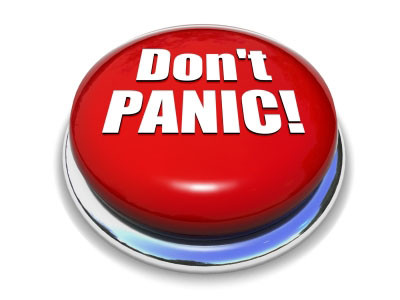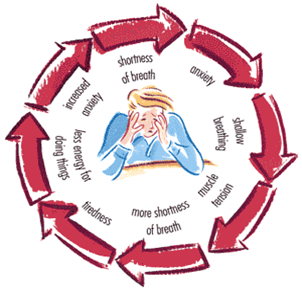
Ever found yourself thinking about an interview, seeing someone you have not been expecting to see, or getting the rising feeling of a panic attack? Do your thoughts sometimes become clouded, breathing short and suddenly you’re sensing panic? Sometimes for no apparent reason these symptoms can come on. They are almost always indicative of a further problem.
Contents
What is a panic attack?
Panic attacks can be a mixture of physical and psychological symptoms. Lasting between five and 20 minutes, they can be terrifying, confusing and lead to all sorts of other complications such as agoraphobia, depression and anxiety. Actually, panic attacks aren’t really dangerous and shouldn’t cause any physical harm. The problem is that they can feel as if they are. In very rare cases people end up hospitalized due to consequences of a panic attack, as opposed to the actual attack.
Those who have experienced panic attacks have varying symptoms, but many cite an overwhelming sense of fear. Sometimes this is accompanied by a kind of sense of detachment from what’s happening, and disorientation.
The psychological symptoms are usually anxiety and panic, as well as those described above, but panic actually presents itself in a physical way too, so it is not unheard of to also feel:
- Nausea
- Heart palpations
- Sweating
- Trembling
- Difficulty breathing or shortness of breath
- Chest pain

What causes panic attacks?
The real underlying cause of panic attacks is often linked to trauma or some events in your life that have remained uncovered. There can be many different triggers for panic attacks, sometimes these are really buried within the subconscious.
Anything from catching a bus to having sex, or having an interview to being incrowds can trigger panic attacks.
Physically, the symptoms of a panic attack are caused by your body going into a natural state of fight or flight, which occurs in response to a threat. The trick is something as lovely as kissing a new partner for the first time, isn’t really a threat, but your mind feels nervous, so your body kicks out this reaction. When you start to panic, the body tries to take in more oxygen. This results in quickened breathing. Also, you automatically administer hormone such as adrenaline, which can cause palpitations and muscle tenseness.
Common treatments for panic attacks
There are several different types of medication that can be prescribed to treat panic attacks. These include antidepressants, SSRIs, tricyclic antidepressants, clonazepam, diazepam, pregabalin and more. Many of these are developed to treat associated disorders, such as heart problems and high blood pressure.
As such, their use as a remedy to panic attacks can be ineffective, since all they are really doing is masking the problem. As with all medication, prolonged use of anti-anxiety meds can lead to tolerance, which in turn causes you to need a higher dosage. They can be highly addictive; meaning you begin to develop a dependency, and feel less able to cope with daily life.
There are a long list of side effects, which can actually be more frightening than the panic attack itself, which include sickness, nausea, vomiting, vertigo, dizziness, blackouts, dry mouth, palpitations, drowsiness, blurred vision and weight gain.
As such, it is a good idea to try and get to the root of what’s caused the panic in the first place. You can of this by keeping a diary and recalling what happened prior to each attack. Therapies can help to identify where the problem stems from. The highly effective Panic Away program is designed to help provide this insight from the comfort of your own home, as many people with anxiety problems cannot conceive of leaving their house. Get control over your attacks with Panic Away!
